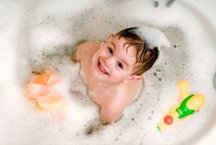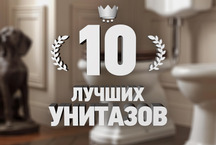In the table of ranks, the first stage rightfully belongs to cast-iron baths, the production of which was mastered in the second half of the 19th century. What makes them attractive?

The advantages and disadvantages of cast iron baths
Undoubted advantages
- The impeccable reputation of cast iron baths is based on the reliability and durability of the enamel coating and material. It is able to protect products from corrosion, different color depth and shine silky smooth texture.
- Water cools longer than in a steel bath;
- Durability and durability;
- Easy cleaning. In comparison with acrylic, the enamel coating of the bath has a greater luster;
- Due to the damping properties of cast iron, the baths are the most "quiet". Massiveness and graphite elements make such baths not vulnerable to the effects of vibration, muffle the sound of water and do not resonate when struck;
- Pricing is very democratic, and everyone can afford a cast-iron bath.
Distressing flaws
- Initially to the touch, the cast iron is cold. It is heated by conducting heat from water to metal, and then back to the room. That is why to maintain heat, you must constantly add hot water to the bath;
- Enamel bath cover is vulnerable to impact. Break off the enamel is very simple, especially if you drop a heavy metal object in the bath. And at home it will be impossible to carry out the restoration of the product;
- Massive and heavy weight, creating inconvenience during transportation and installation of the bath. By reducing the wall thickness, European manufacturers reduce the mass of products to 120-130 kilograms. Domestic cast-iron baths have a wall thickness of 7-10 millimeters, European models - 5-6 millimeters;
- Casting iron is a rather complicated procedure, so such baths cannot surprise with a variety of shapes.
Cast iron bath selection
The main thing - the quality of enamel
When choosing, first of all, you should pay attention to the surface of the bowl, which should be perfect. Do not buy a bath with caverns or black dots. Light tuberosity, called by specialists “cast iron cellulite” (it can be noticed if viewed at an angle of the product wall), is inevitable. However, if it can be determined by touch, then this means that the product is of poor quality.
How much does the bath weigh?
Approximately 100-150 kg. And with its transportation alone is likely not to cope - this should be taken into account when buying.
For example, the popular model of the Novokuznetsk plant “Nostalzhi” with the size of 170x75 cm weighs 114 kg, the Kirov Laguna Lux (150x70) - 104 kg, Roca Continental (Spain) with the size 150x70 cm - 73 kg, Jacob Delafon (France) of the Parallel series (170x70) - 121 kg.
Appearance
The appearance of the product, as well as its service life is determined by enamel. Baths of the leading manufacturers are covered with uniform throughout the thickness, durable matte or glossy enamels (white enamel has a thickness of 0.8 millimeters, color - 1.2 mm). Manufacturing techniques are improving, but at the same time, for example, “Jacob Delafon” traditionally conducts manual enamelling of baths. It is expensive and time consuming, however, it guarantees excellent quality of antibacterial dense coating.
Enamel is applied in several layers: liquid, then powder for fixing. The most important components of enamel used by European leaders are titanium salts, which make the surface less susceptible to wear and smooth. Some manufacturers (for example, Kirovsky Zavod) add silver ions to the enamel. Thus, the surface of the baths is made more hygienic - under the influence of silver ions, water is purified (this was confirmed by the laboratory of the State Sanitary and Epidemiological Surveillance of Russia).
Despite the fact that cast-iron baths are difficult to give an intricate shape, designers find ways to give products a unique look.
Colored baths
Mostly cast iron baths are enameled in white or light shades.But for example, the company "Marco Polo" (Hong Kong) paints its models in all the colors of the rainbow.
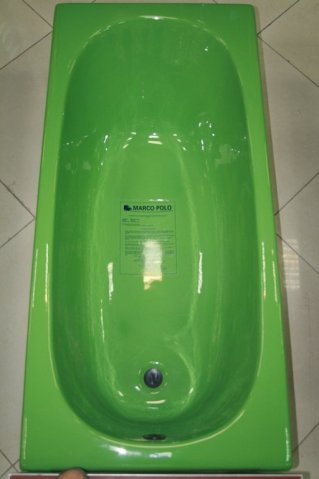
Retro baths
A freestanding retro bathtub is a work of art. Often these fonts are painted by hand, the pattern for each product is individual. The color of the outside and the legs are also chosen by the buyer. Such a bath will look very elegant in a classic interior.
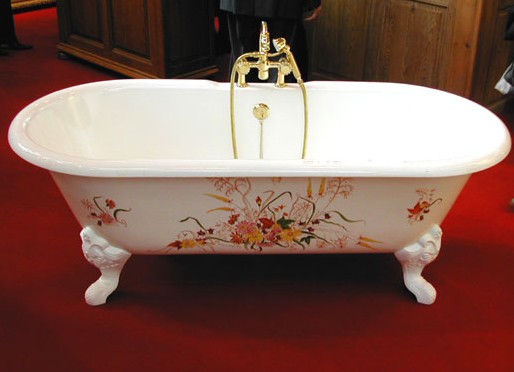
Photo: www.xyzshop.ru Herbeau Antoinette
Sizes and shapes
Cast iron bathtubs do not vary in size. Modern cast-iron baths have the following standard sizes: 1800x800 / 850 mm, 1700x700 / 750/800 mm, 1500x700 mm. The exception is the Super Repos model, produced by Jacob Delafon, its width is 900 millimeters. The bowl can be from 500 to 600 millimeters deep, there are also less deep models - 400-430 mm.
Corner Cast Iron Baths
Not all designer fantasies can be embodied in cast iron - the technology of the casting process does not allow making round and angular shapes. That is why it is rather difficult to make a bowl according to the bends of the human body.
And only Kohler (USA), the oldest manufacturer of cast-iron baths in the world, proved that the impossible is still possible, and released the angular model Kohler Mayflower. The price of this font is quite high - more than 150,000 rubles - but the design and quality is also at a high level.

Cast Iron Baths
Session baths of 100x70 size are manufactured by ROCA. Their cost ranges from 12,500 to 18,000 rubles.
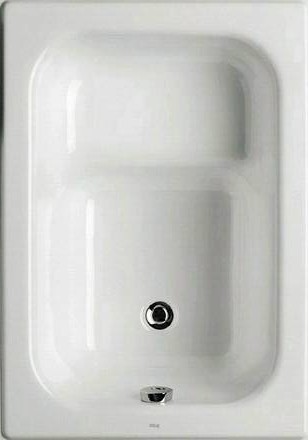
Photo: vannochka.info Roca Banaseo sit 100x70
Hydromassage bathtubs
Cast iron baths with hydromassage are manufactured by “Novial”, “Roca”, “Jacob Delafon”, etc. In such baths made on the basis of conventional models, massage equipment is used by the leading manufacturers in the hydromassage market - “Sirem” (France), “Koler” (Austria), etc.
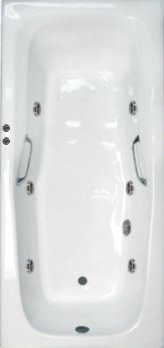
Photo: sancho.ru Novial Melissa Standard
In addition, any cast iron bath can be additionally equipped with a hydromassage. Such work is carried out by specialized companies.
How much does a cast iron bath cost?
Cast iron baths price range is large. The high-quality models manufactured by the Kirov Plant cost from 5,000 to 7,500 rubles, the plant in Novokuznetsk produces models worth about 7,000 rubles.
The economy-class bathtubs of European production without drain and overflow and handles cost 7500-8500 rubles. Drain-overflow (semi-automatic) - this is an additional 1000-1500 rubles, chrome handles increase the cost of the bath by 1500-2500 rubles. You can add a complete set of legs for 750-1800 rubles.
The cost of Jacob Delafon baths 1700x1700mm in size varies from 16,500 to 26,000 rubles. And Roca models with the same size are cheaper - from 10,000 to 15,000 rubles.
Cast Iron Bath Restoration
As before, 79 percent of Russians use cast-iron baths and do not plan to replace them with new ones. Baths that have lost their appearance (with rust, chipped enamel, etc.) can now insert a 2-layer molded ABS / acrylic liner. Side decorative panels of the same plastic can give an elegant modern look of the old font. It does not require major repairs, which is necessary when dismantling the bath. This economical method is in great demand.
A bit about the production of cast iron baths
Cast iron baths are made by casting. Casting is a rather complicated procedure. First, cast iron is melted at 1200 degrees in blast furnaces. The melt is poured into molds, where it crystallizes, after which the casting is polished, coated with enamel mass and subjected to heat treatment. Many leading manufacturers have their own know-how, their own casting secrets.
However, both domestic and European manufacturers use vacuum-film molding on casting lines, which is considered environmentally friendly and provides high-quality castings.
There are few factories for the manufacture of cast iron baths. They are the companies “Porcher”, “Herbeau”, “Jacob Delafon” (France), “Recor” (Portugal), “Odoksan” (Turkey), “Aqualux” (Hong Kong), “Kohler” (USA), “Roca ”,“ EuroStandart ”(Spain),“ Serena ”(Germany),“ Goldman ”,“ Evoli ”(China).In Russia - “Kirovsky Plant” (Kirov), enterprises in Lipetsk and Novokuznetsk.
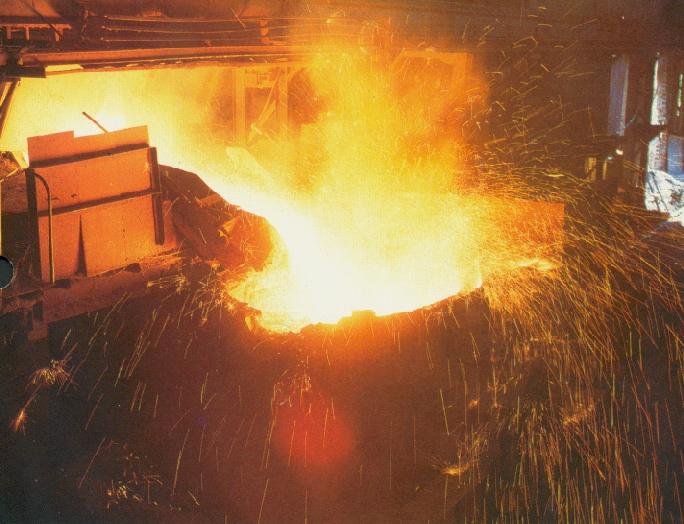
Many cast iron baths on the market are domestic. Imported ones are of rather high quality, they are made of thinner cast iron (walls about 5 mm thick), have a more elegant appearance. For example, some models are equipped with comfortable handles, screw feet to adjust the height of the level, gilded or chrome fittings, etc.
